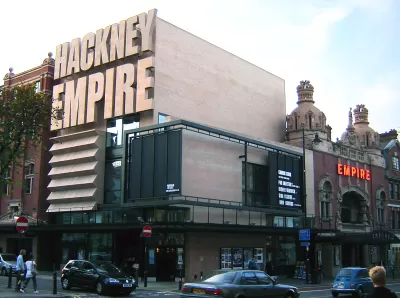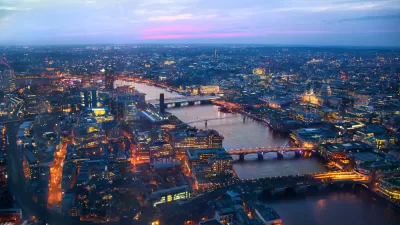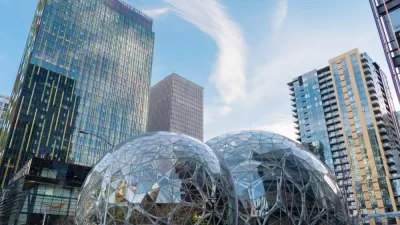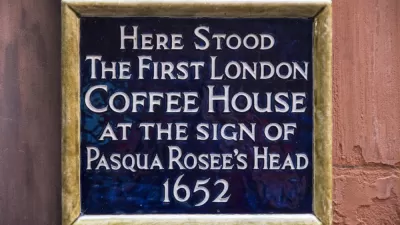With market pressures pushing landowners in London to build pricey new flats, local music venues are getting the boot; but does this make sense economically?

Given that over one-third of London's "grassroots music venues" have shuttered since 2007, CityMetric’s Shain Shapiro sat down to do the math on what exactly cities lose when their music venues close. Doing the complicated math based on best guestimates, Shapiro sits down with a friend, who happens to own a music venue in the London borough of Hackney, to see what the economic return would be if the property was redeveloped with four flats.
"Using our iPhone calculators, we tallied up that his venue contributes £694,000 to the local economy each year, outside of its independent takings as a business. Include those, and the amount rises to £1.3m.
Furthermore, this venue employs 12 people at the London living wage. In total, this venue is worth, theoretically speaking, as much as £2m a year to the local and national economy."
The property owner developing the property could expect approximately £2m in the sale of the units—but as Shapiro points out, that is a one-time profit, "not something that will be pumped into the economy year after year." The side benefits of attracting people to the neighborhood include support for local restaurants and infrastructure (through transit fees).
Further, there is the non-quantifiable value of having a music venue (or art venue, theatre, etc.) in the neighborhood. The current sales price of the flats reflects the value of having entertainment venues in the neighborhood, creating an attractive environment to live. Without those venues, would the value of the flats be as high?
FULL STORY: Are music venues as valuable as houses – and can we prove it?

Study: Maui’s Plan to Convert Vacation Rentals to Long-Term Housing Could Cause Nearly $1 Billion Economic Loss
The plan would reduce visitor accommodation by 25,% resulting in 1,900 jobs lost.

North Texas Transit Leaders Tout Benefits of TOD for Growing Region
At a summit focused on transit-oriented development, policymakers discussed how North Texas’ expanded light rail system can serve as a tool for economic growth.

Why Should We Subsidize Public Transportation?
Many public transit agencies face financial stress due to rising costs, declining fare revenue, and declining subsidies. Transit advocates must provide a strong business case for increasing public transit funding.

How to Make US Trains Faster
Changes to boarding platforms and a switch to electric trains could improve U.S. passenger rail service without the added cost of high-speed rail.

Columbia’s Revitalized ‘Loop’ Is a Hub for Local Entrepreneurs
A focus on small businesses is helping a commercial corridor in Columbia, Missouri thrive.

Invasive Insect Threatens Minnesota’s Ash Forests
The Emerald Ash Borer is a rapidly spreading invasive pest threatening Minnesota’s ash trees, and homeowners are encouraged to plant diverse replacement species, avoid moving ash firewood, and monitor for signs of infestation.
Urban Design for Planners 1: Software Tools
This six-course series explores essential urban design concepts using open source software and equips planners with the tools they need to participate fully in the urban design process.
Planning for Universal Design
Learn the tools for implementing Universal Design in planning regulations.
Ascent Environmental
Borough of Carlisle
Institute for Housing and Urban Development Studies (IHS)
City of Grandview
Harvard GSD Executive Education
Toledo-Lucas County Plan Commissions
Salt Lake City
NYU Wagner Graduate School of Public Service





























